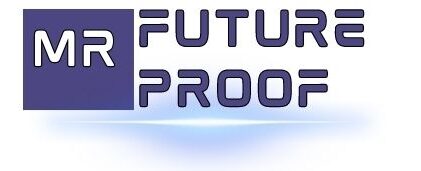Virtual reality in special education creates inclusive learning experiences that enhance student engagement, promote skill acquisition, and facilitate cognitive, emotional, and social development. Virtual reality (vr) technology has revolutionized the field of education and brought remarkable advancements in teaching and learning.
In the domain of special education, vr has opened up exciting opportunities to provide students with disabilities access to immersive, interactive, and personalized learning environments that go far beyond the traditional classroom setting. By simulating real-world scenarios and providing multisensory feedback, vr can help students with diverse learning needs overcome barriers to learning, enhance their motivation and engagement, and acquire critical academic, behavioral, and social skills.
This article explores the benefits of using vr for special education and how it can offer innovative and inclusive experiences for all learners.

Credit: www.analyticsinsight.net
Understanding The Role Of Virtual Reality In Special Education
Virtual reality (vr) technology has come a long way in recent years and is transforming the face of education, especially special education. Special education teachers are discovering how vr can create inclusive learning experiences for students with disabilities. Understanding the role of vr in special education can help educators optimize learning opportunities for their students to boost their educational outcomes.
We’ll examine three ways vr is enhancing special education.
Providing A Safe And Controlled Environment For Learning
Students with disabilities can face challenges with environmental distractions, sensory overload, and transitioning between learning environments. Vr technology provides a safe, controlled, and immersive environment that helps minimize these distractions. Here are some ways that vr provides a safer and more controlled environment for learning:
- Students can learn and practice new skills in a simulated environment before applying them in the real world.
- Vr technology can be adjusted to meet individual needs, including sensory needs, making the learning environment more inclusive and accommodating.
- Students can engage in high-risk activities such as science experiments or practicing social skills in an environment that is physically safe.
Customizing Learning Experiences For Specific Disabilities
Vr technology can be tailored to fit the specific needs of various disabilities, making it an effective tool to assist special education learners. Here are some examples of how vr can be customized for specific disabilities:
- Students with visual impairments can benefit from 3d audio and motion sensors that map the environment in real time to assist with navigation and spatial orientation.
- Vr technology can be used to simulate social situations for children with autism to help them develop social skills and communication abilities.
- Students with mobility impairments can use vr technology to explore and experience places they might not normally visit because of physical barriers.
Improving Engagement And Motivation In Learning
Learning through vr can be a fun, exciting, and interactive experience that improves engagement and motivation for students. Here are some ways vr can help boost motivation and engagement:
- Vr technology offers students a unique and interactive experience that can be more engaging than traditional methods of learning.
- Students can take control of their learning by exploring, experimenting, and discovering on their own within the vr environment.
- The immersive nature of vr can make learning more interesting and help students retain information better.
Vr is transforming special education, creating unique and inclusive learning experiences that can meet the diverse needs of students with disabilities. It provides a safe and controlled environment for learning, customizes learning experiences for specific disabilities, and improves engagement and motivation in learning.
By leveraging vr technology, special education teachers can help their students achieve academic success and personal growth.
Case Studies: Virtual Reality In Special Education Success Stories
Virtual reality (vr) technology has been transforming the way we learn, providing students with immersive and interactive experiences in the classroom. It has become an increasingly popular tool in special education, as it offers inclusive learning experiences for students with diverse learning needs.
We will explore the success stories of using virtual reality in special education.
Success Story 1: Virtual Reality For Autism Spectrum Disorder
- Vr therapy has been critically acclaimed for its effectiveness in helping children with autism spectrum disorder (asd) develop social, communication, and behavioural skills.
- Using vr technology, students with asd can explore different social scenarios in a controlled environment, helping them to acquire social and communication skills and manage challenging behaviour.
- Vr technology can help students with asd to reduce their anxiety levels by creating a comfortable and secure environment for learning.
- Vr therapy helps students with asd to learn different strategies to manage stress, develop coping mechanisms, and improve their ability to deal with everyday situations.
Success Story 2: Virtual Reality For Hearing Impairment
- Vr technology has emerged as a powerful tool for teaching deaf or hard-of-hearing students, providing them with a unique and engaging learning experience.
- Vr technology can convert spoken words into visual elements, enabling the students to “see” the words being spoken and better understand the sentence structure.
- Vr technology can also simulate different environmental sounds, allowing the students to learn how to identify sounds and their sources.
- Using vr technology, students with hearing impairments can practice their lip-reading skills in a controlled environment, which can significantly improve their ability to communicate with others.
Success Story 3: Virtual Reality For Attention Deficit Hyperactivity Disorder (Adhd)
- Vr technology has been effectively used to help students with adhd improve their focus and attention span.
- Vr technology provides students with an immersive and stimulating learning environment, which can help them to sustain their attention for longer periods.
- Vr technology can help students with adhd to develop cognitive, behavioural, and coping strategies that can help them manage their symptoms.
- Students with adhd can benefit from the interactive, multi-sensory nature of vr technology, which can enhance their learning experience and help them to acquire new skills.
Vr technology provides a range of benefits for students with diverse learning needs, offering inclusive and immersive learning experiences. As more schools and educational institutions integrate vr technology into their curriculum, we can expect to see more success stories in the future.
Implementing Virtual Reality In Special Education
Virtual reality (vr) technology has revolutionized many sectors, including education. The potential of vr in creating immersive and inclusive learning experiences for special education students is enormous. Implementing vr technology in special education can break down many barriers that students face during traditional teaching methods.
In this section, we will explore the barriers to adopting vr in special education, strategies for implementing vr technology in the classroom, and ethical and legal considerations associated with the use of vr.
Barriers To Adoption Of Virtual Reality In Special Education
Despite the potential benefits, the implementation of vr technology in special education does face some challenges. Here are some of the major barriers to its adoption:
- Cost: Vr can prove to be expensive, especially for schools that operate on a tight budget
- Complexity: Some special education teachers may lack the knowledge and expertise to adopt the technology and integrate it effectively into their curriculum
- Access: Many special education students may not have access to the appropriate devices for vr technology outside of school.
Strategies For Implementing Vr Technology In The Classroom
To overcome the above barriers, special education teachers may need to consider the following strategies:
- Research vr technology to find the most suitable and cost-effective devices for the classroom
- Provide appropriate training for teachers to comfortably use the vr technology and integrate it into their lesson plans
- Secure funding for vr technology available through grants, sponsorships, and donations
- Educate parents about the benefits of vr technology and encourage them to support the initiative by providing vr-supported devices even outside of school
Ethical And Legal Considerations With The Use Of Virtual Reality In Special Education
As with any educational technology, legal and ethical considerations must be taken into account when using vr technology in special education. Some things to consider include:
- Data privacy: It is important to ensure measures are in place to keep student data safe and secure while using vr technology
- Intellectual property: Developers of the vr technology should consider the intellectual property laws and ensure that the technology does not infringe on any existing patents or copyrights
- Safety: While vr technology is generally safe, it is essential to follow guidelines on safe usage and provide appropriate supervision when the technology is in use.
Implementing vr technology in special education can significantly benefit students by creating an inclusive and engaging learning experience. By identifying and overcoming the barriers to adoption, special education teachers can successfully implement vr technology in their classrooms. Ethical and legal considerations must also be taken into account for safe and technology-compliant use.
Frequently Asked Questions On The Benefits Of Virtual Reality For Special Education: Inclusive Learning Experiences
What Is Virtual Reality For Special Education?
Virtual reality is an immersive computer-generated environment designed to supplement special education learning and provide inclusive experiences.
How Can Virtual Reality Help In Special Education?
Virtual reality helps special needs students learn through interactive and engaging mechanisms, improving their retention, and boosting their confidence.
What Are The Advantages Of Using Virtual Reality In Special Education?
The advantages of using virtual reality in special education include better accessibility, individualized learning, real-world simulations, and increased student engagement and motivation.
Conclusion
Ultimately, virtual reality technology presents an excellent opportunity to enhance the learning experience for students with special needs. By providing accessible and inclusive immersive environments, virtual reality can support students’ cognitive, emotional, and social development in ways that traditional teaching methods may not be able to achieve.
While virtual reality is still in the early stages of implementation in special education, the educational implications are promising. The benefits of using virtual reality in special education can be summed up in three words: engagement, access, and creativity. By fostering engagement, giving access, and stimulating creativity, virtual reality can create an inclusive learning experience for all students.
As educators prioritize personalized learning experiences, virtual reality has proven to be an emerging technology that can provide meaningful educational experiences and help meet the unique needs of all students in special education classrooms.

